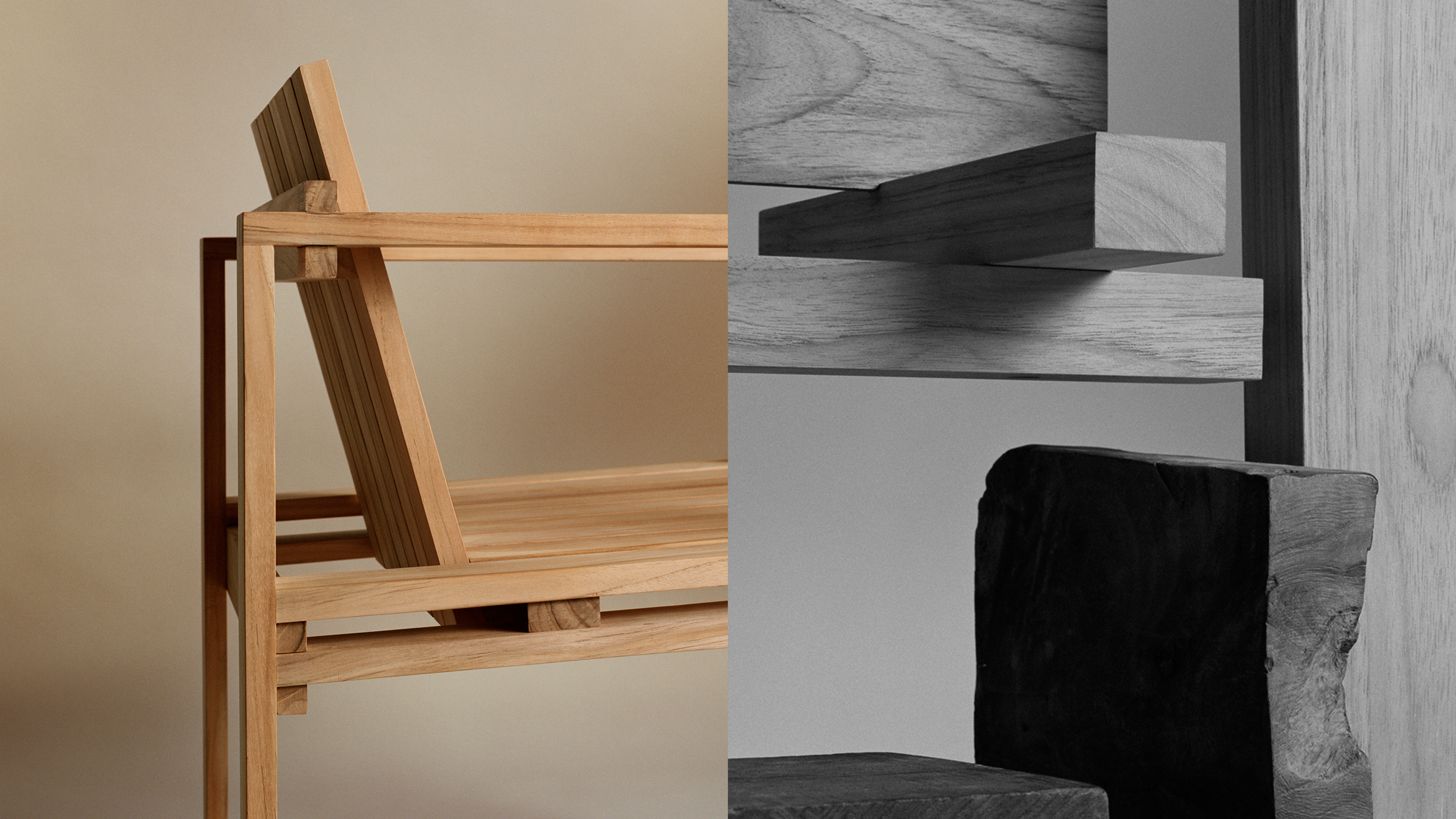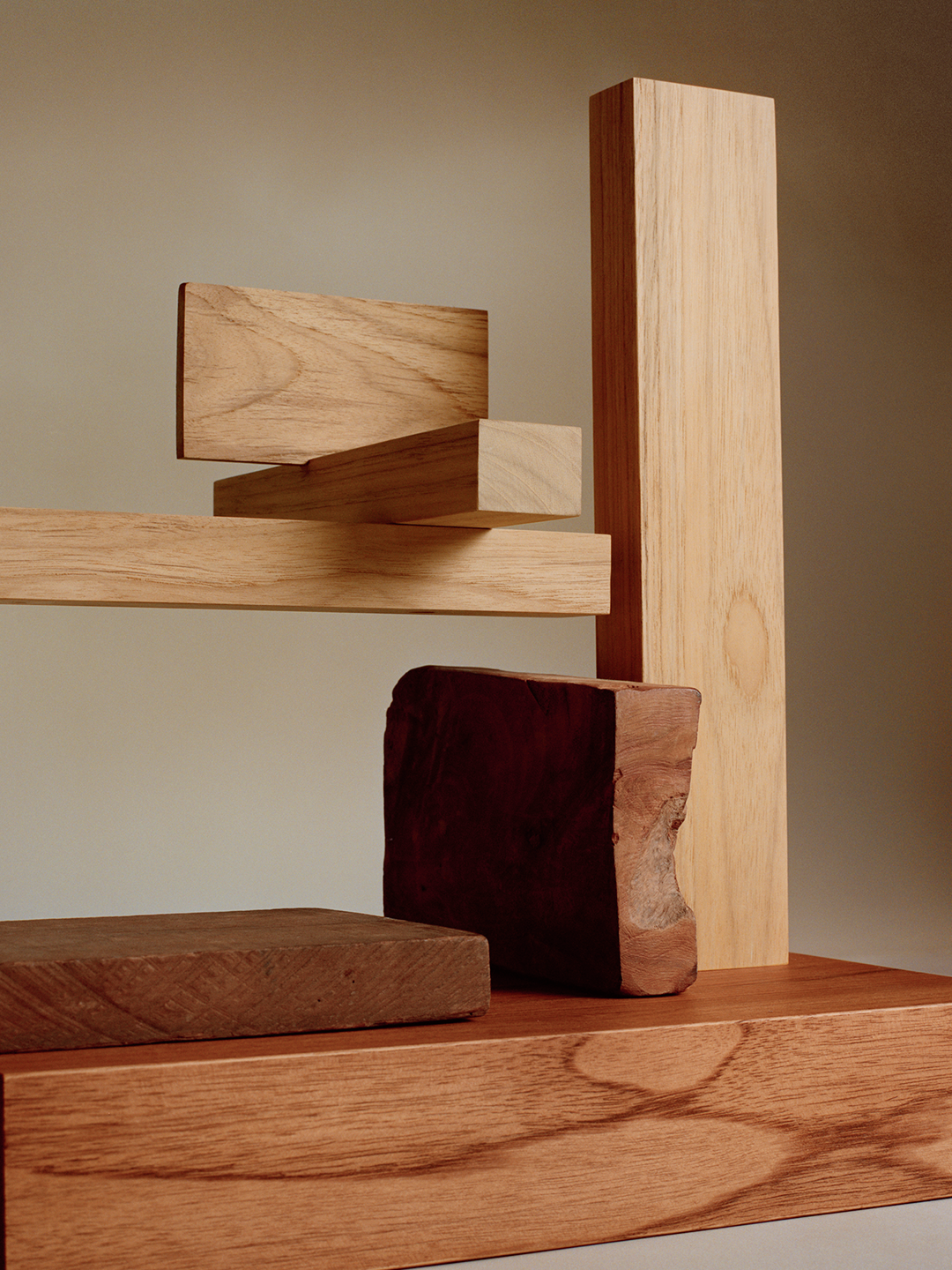Walnut
A highly sought-after wood with a luxurious chocolate-brown tone.

Walnut has been a favourite of fine furniture-makers since the Renaissance period. Valued for its warm sheen, it boasts a decorative grain distinguished by a clear, slightly undulating pattern that makes each piece of wood one-of-a-kind. While walnut antiques can be found in some of Europe’s grandest historic homes, a newfound interest in dark wood has seen walnut emerge as a symbol of elegance and exclusivity in contemporary homes, too.
With 21 species in its family, walnut trees are relatively widespread. However, the wood’s desirability is heightened by the fact that the walnut trunk is thin and yield from it is low. Ideal for intricate carving, its dense structure results in a strong and stable wood that is highly resistant to wear and tear. Such durability has further cemented walnuts’ reputation as the wood of choice for heirloom pieces destined to be passed down through the generations.

With its deep, dark colour tone, walnut lends itself naturally to finishes. Working only with the tree’s heartwood, we see to show off its beauty by surface-treating the wood with lacquer or oil. Not only does oil create a beautiful surface with a richer colour, but it strengthens the wood’s resilience to ensure longevity. Over time, exposure to sunlight will age the walnut's color until its appearance eventually brightens, resulting in a patina with remarkable depth.
Qualities in furniture production
Walnut is exclusive and much sought-after due to its deep, dark brown colour and decorative grain.
Origin
Walnut is a naturally occurring species in North America, primarily in the eastern part.
Growth & size
The walnut tree can grow up to 30 metres in height and 150 cm in diameter.
The walnut trunk is often relatively thin and the pith, which is not used for furniture production, is often thick, and the utilisation rate is therefore low. This makes walnut an exclusive type of wood.
Hardness
Walnut is a relative hardwood species.
The weight of the wood may vary, but the mean weight is approximately 570 kg/m³.
Appearance
At Carl Hansen & Søn, we only use the heartwood of walnut.
Walnut has a chocolate-brown, purplish tone in the untreated state and may have grey-brown to black colour deposits which produce a decorative figuration.
The wood has clear, often slightly undulating and uneven grain.
The wood can vary greatly in tone and grain thickness within the same trunk.
Walnut has a firm and dense structure.
Surface treatment
At Carl Hansen & Søn, we surface-treat walnut with lacquer and oil.
Surface-treating the wood ensures a beautiful surface, additional durability and easy cleaning.
Since the colour of the wood ages with exposure to light, its appearance changes over time. Walnut wood will eventually brighten in colour.


Highly resistant to weather and water damage, teak unites premium quality with a polished appearance.